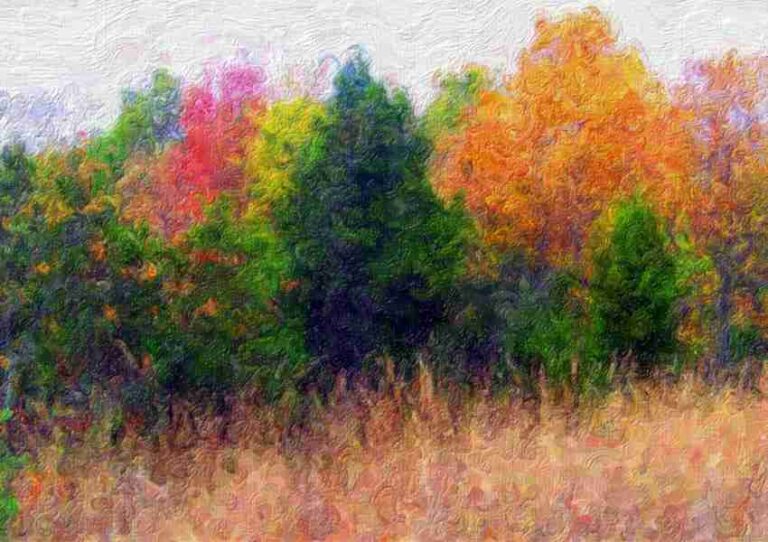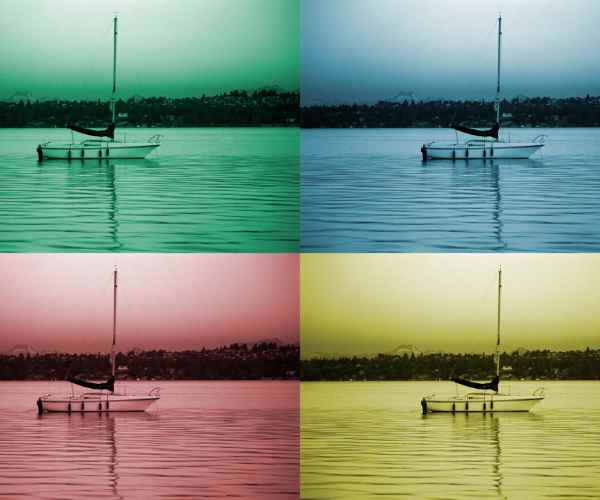The 20th century saw the birth of the Surrealist art movement to break free from all notions of decided rational thought. It aimed to embrace the unconscious, allowing for a new wave of creation that was unbound by logic or reason. As a philosophy, this movement did not simply constitute the reimagining of art, but marked the deep examination of the human experience itself, in which the rules set in place by the intersection of reality with artistry were broken.
André Breton came to be known as the father of surrealism, having been deeply involved with the art movement. In 1924 he penned down the Surrealist Manifesto, which was a an arbitrary document stating the beliefs associated with the movement. His manifesto focused on the role the subconscious played in creating art and literature. Instead of remaining bounded by the notions of rational thought and society, he called for a revolution.
Breton drew many of his ideas from the German philosopher and psychologist Sigmund Freud who is known as the father of psychoanalysis. Theories of Freud regarding the unconcious and regarding dreams provided the surrealist movement with a firm theoretic basis. Freud believed that dreams were the best way to gain insight into the treasures buried deep in the subconscious, and emotions that are not active in everyday life. This idea appealed greatly to surrealist artists who aimed combining logic and logic-free art.

One of the great surrealist artists who struggled with the Freudian belief of human personality is Salvador Dalí – The persistence of memory is his hallmark work, representing surrealist’s deep interest in time and their dreams. Dalí is a Freudian due to the fact that considers dreams to be an extension of reality rather than artificial images created in one’s sleep; as such time becomes amorphous and clocks begin to melt away in dreams.
Another artist from the surrealist movement, René Magritte, also digs into this notion in his pieces – Works such as ‘La Trahison des Images’ (‘The Treachery of Images’) question the viewer on what their perspective is regarding reality by exposing them to the contradiction of the painting ‘Ceci N’est Pas Une pipe’ (‘This is not a pipe’) – This is an example of the famous paradox that depicts the problematic perspective of representation while still existing in the vast world of surrealism.
Surrealism was not confined to artwork in photography, sculpture or paintings but branched out into other ordinary types of creativity for example writing and filming. Figured writers like André Breton and Louis Aragon employed a technique called automatic writing which is unconscious writing where an individual composes without being aware of every single detail of the process, letting the subconscious control the creation, this was a form of a direct application of Freud’s concepts. Automatic writing was the direct application of Freud’s concepts; its purpose was to skip the rational of any mind and enter into the unconscious.
The surrealism had a gross and absolute stunning effect on the art, because it was the realisation of boundaries that had already been set on artistic liberty. It helped in destroying the old conception of art and created the way for new dimensions. Surrealist creative people with the aid of dreams and the impulse of the unconscious were able to create works that were completely unique.
How does the unconscious participate in the development of art?
Automatism is one of the most vital techniques of surrealism, allowing practitioners to have their creation in a way that does not involve much thinking from their part. This approach is highly concerned with unconsciousness in a way that enables surrealists to create pieces that have no inherent logic and are based solely on their myriad of ideas. Rather, automatism highlights a great destitution from the effects of awareness and explains the way raw and unrefined thoughts emerge from the human mind.
Hands down, Joan Miró and André Breton are great supporters of automatism. A lot of Miró’s paintings, especially the ones from the series of his Automatism works, reflect spontaneity with a fusion of multiple images without sketching the paintings first. On the other hand, Breton who was a founder to the surrealist movement endorses this interesting technique through which he could expose the inner parts of one’s brain. In this regard, Breton employed the term automatism to describe his approach to painting dreams and imaginations that would normally remain dormant.
Automatically writing, and free energy are some activities which artists and writers pursue through their hands on the concept of automatism. They were not particularly conscious during this movement, which is why this activity happened. This type of technique is often undertaken by a writer or an artist to help them create art that is unique and beautiful. Super surre was a very reflexive of blurring the lines of this discipline. Amoratisms operate without logic and reason and therefore tend to emerge creation that is unprecedented and abstract.
With Miró, I think slash sex As such, auto-writing was accepted as a facilitator of achievement of surrealism goals, a variant of informal creativity that aided Suraea’s inspiration. As a slant on surrealism, auto-writing has been a popular turn of auto-writing. It’s funny that such tradition started as spontaneous collaboration with a renowned surrealist painter. The unconscious adds splashes of color to chaotic automatism, leading scrolling amalgamation of the ever- surging imagination tremendous constraining creative energies of the helplessukaHope the reachable horizons will be different.
In the wider framework of surrealism, automatism was a means to join the line between the realized and the un-realized thoughts. Surrealist painters held the belief that accomplishment of chance procedures enabled them to create more original works which were more close to human’s true nature. This claim came from the conviction that the models are only limited to the consciousness while out of the bounds of rationality and social constraints lies boundless creativity.
Automatism, in a lesser degree, influenced other artistic movements succeeding surrealism such as abstract expressionism. For example, the very idea of doing things without any controlled agency was appealing to arteests such as Jackson Pollock who tends to utilize a certain form of automatism in drip paintings. Such a technique, although appearing in different environments of application, was a continuation of the surrealist tradition of seeking the ways of revival of the unconsciousness area by the means of art.
How does Surrealism transform the subconscious into painting?
Art has an important and profound ability to portray some of the things that reside deep within the subconscious. It is no surprise to anyone that Surrealism art has been closely intertwined with dreams. Surrealist art tends to take concepts and objects from the real world and turn them into jarring and uncanny images while keeping them in an imaginative dream state. The paintings are created with different visions in mind than that of a normal one, and the acts that constitute the final form of the painting and the efforts applied during the creation process help cross the boundaries of imagination, thus creating a new surrealistic form of reality through art.
Surrealism, in a nutshell, recalls deep memories while fusing distinctive elements with imagination, literature, and psychology. One of the foreion figures in surrealism Salvador Dali has froever stood out as an artist who transformed all forms of works through this concept. His paintings such as “The Persistance of Memory” remain outliers in just how uncanny the dreamy imagery used to explore the unconscious one is, in his words clocks do not have to only mark at specific points in time and can be viewed in diverse angles and positions, thus providing a new perspective for the wearer.
René Magritte, in his painting, “The Treachery of Images,” portrays a pipe, tagline –“Ceci n’est pas une pipe or This is not a pipe.”, which leaves the audience perplexed since it is contradicting. This Magritte painting goes on ahead to establish the main theme in surrealism and goes on to prove that unexpected images invoke a myriad of emotions and confusion to the people who are viewing the painting. Surrealism, in its essence, is simply defined as exploration of boundaries between the ontology of an object and the representation of that object. Magritte highlights this boundary very effectively and challenges the audience by asking them to explore what they see, and compare this with the deepest parts of their mind.
It feels as if dreams and reality intertwine into a single piece as an artwork, Surrealism aims to portray everyday objects in ways that leave the human brain in a state of confusion. Surrealism can appear to be gender biased at times, such as when Magritte’s painting that features clocks, landscape and eyes. The scene portrays women in an uncanny manner which clashes with a normal portrayal of women in paintings. Surrealism aims to reinvent the language of feminism by fusing it with luminaries from the past.
The inclusion of quotidian items in the existence of surrealism can be explained with the insight of Freud on the idea of unconscious. To Freud, dreams were something that the unconscious created in a bid to work through the repressed wishes and feelings of the individual. Surrealist artists, in their bid to bring to the fore the desire that has not been realised by the viewer’s unconscious mind, transform simple objects into something that is dreamlike and surreal and often untouchable. This serves as a critque of their subconscious since it propels them to assess within and engage with their uncensored thoughts and fantasies.
What Role Do Symbols Play in Surrealism and What is Their Relevance in Deciphering Visual Metaphors?
Symbol-based surrealist art is multi-layered and drawn from various perspectives. These symbols with great potency facilitates the artist in documenting the intricate and sometimes suppressed chunks of the mind. These symbols are not mere decorative pieces; they are visual metaphors that serve to express the difficult and intricate nuances of the psyche. For surrealist art, grasping these symbols is a vital step towards interpreting the visual metaphors that are key to the style or type.
Eyes, clocks, landscapes, and similar items are prevalent symbols in surrealist art and come with specific interpretations resting in the unconscious. Eyeballs are sometimes construed as a symbol for the meaning of vision and what it is to look rather than see. The eye in The False Mirror by René Magritte becomes the entry to the subconscious, the world that everyone is invited to in order to witness through the unconscious.
In the surrealistic art which Salvador Dali’s painting ‘The Persistence’ illustrates in memory is also quite astonishing. The melting clocks in our subconscious, on the other hand, signifies the metaphorical and arbitrary characteristics of time. One cannot imagine the linear and crude dimensionality of time in real life, but to see Dali’s clocks dripping and twisting gives the impression that time in dreams loses its significance and meaning in the depths of the subconscious. Not only does it serve to express the eccentric feel of time as being non-existence but literally serves as an analogy for how memory is understood and interpreted.
Surrealist artists often use landscapes as a means to explore the unconscious. The areas are lifeless and empty, suggesting that this too is in part how the subconscious can be. In the case of Yves Tanguy, his works use a more dream like approach and use shapes or amorphous forms created from the unconscious. This in turn works as a representation of rationality being thrown out of the window in an attempt to convey the concept of dreaming.
Decoding visual metaphors, on the other hand, requires an insight into the symbols used in the art. It would deepen the understanding of the pieces themselves. The symbols facilitate the process of linking surrealist images with emotions and thoughts that are not entirely conscious.
How Has Surrealism Survived As A Form And Transferred Into More Fields, Including Film And Media?
The reach of surrealism in modern media, including film, digital art, or even fashion, is almost endless. It is safe to say that the investment that the spirit of surrealism made into focusing on challenging reality and subconscious- also has become the foundation of many artists and filmmakers today. They can now address matters of identity, existence, or the human psyche in their works fashionably and in contemporary ways.
What Impact Has Surrealism Had On Modern Film Why?
Now, looking into the world of modern film we can see that surrealism has left a mark there too, especially through the lens of famous directors like David Lynch. The works of Lynch can be viewed as the modern adaptation of surrealism’s dream imagery. His works are often described as surreal while relying on the same three elements; Post-modernism, orchestral music, and artistic visuals. Using Lynch’s “Mulholland Drive” for Example, the year 2001 was marked with a fusion of dream imagery combined with an unconventional storyline. Once again, the film, as well as the book, goes to demonstrate how surrealist concepts of storytelling and imagery can easily transfer into another visual medium, in particular cinema.
In the example provided by Lynch, the nonlinear narrative and counterintuitive characters are patterns that represent the surrealists’ concern with the irrational and the unconscious. The result disorienting effect of these methods simulates the feeling of having a dream, where time and space are ever changing and where the line between real and illusion is nonexistent. In this surrealist context, he grapples with questions of identity and desire, thus transforming his films into an interesting case of the influence of surrealism on modern media.
How Does Surrealism Continue to Impact Contemporary Art?
In contemporary art practice, surrealism still provides a lot of inspiration for artists who want to graphically represent the subconscious mind using the latest technologies. Reportedly, the modern era has exposed the artists to other techniques and tools thus allowing them to manipulate images and create surrealistic art pieces in an unprecedented manner. For example, the photography of Man Ray is said to be surrealistic because of the modern techniques employed like solarization and photograms. These techniques also cut across traditional views of photography and instead make use of the medium to explore light, shadow, and form in a surrealistic manner.
Rafal Olbinski and Erik Johansson are contemporary digital artists who have used photo manipulation and digital collage to further this tradition, setting up surreal panoramas intended to defy reality. As these artists do, so they incorporate symbolic elements and jarring contrasts which are characteristic of the surrealist movement to bring forth the subconscious mind albeit in its dream and irrational state. An example of this is Johansson’s idea of a man walking on a fabric that is road-like, especially when he imagines it, can be described as quite impossible. The surrealist philosophy within which such work is nested allows its practitioners to explore complex psychological issues through visual mediums.
Fashion and Surrealism – What is there in common?
Schiaparelli, closely acquainted with Salvador Dali, was one of the first fashion designers who added surrealist elements to the misses garments. Such garments would not otherwise fit in with her contemporary counterparts who make use of the Surrealist’s arsenal to produce the mysterious and bizarre. She made squandering statements regarding self and self identity by drawing the lines between fashion and art in her creations, statements like the lobster dress scarf wrapping around a neck with a vast picture of a lobster generic by Dalí in it or gowns made with unconventional accessories.
In the present day, designers such as Alexander McQueen and Viktor and Rolf have taken cues from surrealism to design their collections, which greatly differ from standard dressing. McQueen’s creations, mark a distinct ‘dark’ and dream-like feel, as it uses surreal imagery including masks and shredded clothing that depict transformation themes. Viktor and Rolf, however created collections where they have had solutions to surrealist questions in visual art, such as the play with human scale and the angles of vision.
Moreover, Surrealism closely coexists with fashion, and its presence can be felt even in modern communications. Powerful instruments with the help of which the diversity and intricacies of the human psyche can be understood. The dreamy stories of David Lynch’s movies, symbolic images of contemporary digital art, or even just bare fashion designs – all these spheres are filled with surrealism.
What Are Some Common Questions About Surrealism and the Subconscious?
Surrealism emerged from a desire to explore the unconscious and even today, remains an enigma, full of questions regarding its origins, technique, and its influence in the modern world. The goal of this section is to answer some of the frequently asked questions regarding surrealism, and further its deep connection to the subconscious.
What is Surrealism?
Surrealism is an art movement that became popular in the 20th century which stemmed from the exploration of the subconscious and dream-like imagery. André Breton, one of the prominent members of this movement, described surrealism as a “pure psychic automatism” which is a practice of creating art that does not require active thought in order to reach the subconscious. It enables artists to touch upon thoughts of desire, fear, and self in ways that are devoid of logic.
The & The Who/What: Surrealism Of The Subconscious
Helen Mardiros, a professional art therapist and sociologist, states in her interview that Surrealist art is deeply connected to the subconscious, aiming to communicate those thoughts, emotions or feelings that are hidden from the waking mind. Viewer’s perception of reality can be altered by employing symbolic imagery which surrealism aims to do, construct a bridge between the conscious and unconscious. Dreamlike imagery, absurd combinations and juxtapositions are some of the tools employed by surrealist artist to establish contact with the subconscious and influence it.
Art That Was Distinctively Surrealistic
Surrealists engaged in extensive dialogue about the workings of the subconscious mind and came up with a number of quite iconic works; one of them being Salvador Dalí’s “The Persistence of Memory” which has become one of the more widely known pieces of Surrealism that incorporates melting clocks, representing how during a dream neither time nor memory has limits. Another famous art piece, „The Treachery of Images”, by René Magritte captures an object and validates the thoughts of the viewer by focusing on the absolute absurdity by saying “This is not a pipe” and conveniently illustrating a pipe.
How did Freud influence Surrealism?
The theories of Freud’s dreams and the unconscious helped sorely in the development of the surrealism movement. Freud’s work more specifically ‘The Interpretation of Dreams’ exposes the idea that dreams serve as a gateway to one’s unconscious, mediating suppressed desires, fears and conflicts. Surrealist artists relied on Freud in their artistic creations as well as their deeper explorations into the irrational and unconscious realms of human psyche.
Is Surrealism Still Relevant Today?
Surrealism is still immensely revered today and its presence can still be observed spanning across several new age art forms, including film, digital art and even fashion. Modern day artists have not shied away from such traditions and continue to utilize the techniques to probe and interpret the sub consciousness and elicit a sense of disbelief among viewers. The essence of surrealism is unbound and still piques the interests of novel generations of artists and spectators so engrossingly.
Conclusion
In its embrace of dream-like imagery and symbolic representation, Surrealism stands out as an exceptional analysis of the human experience and an advanced introspection of one’s head. Furthermore, Rivera oversaw the blending of surrealism with Mexico’s broad canvas culture while redefining its aesthetic principles. We can ask ourselves, what do these people have against realism? What is it about that era, its people and its trends if not a never-ending fascination with Yoko Ono?
More Post
- How Warhol’s Vision Continues to Shape Modern Culture? – Pop Art’s Legacy
- Exploring Minimalism in Art and Its Lasting Influence -The Power of Simplicity:
- Abstract Adventures: Breaking Down Abstract Art
- How do Classic Art and Architecture Shape Modern Masterpieces? Reviving Renaissance Techniques
- How Creative Expression Enhances Mental Health? Art Therapy for Emotional Healing



